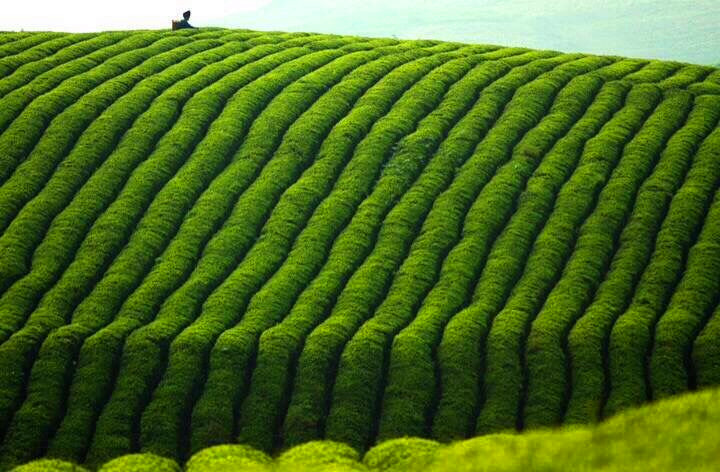008613762194311 | 008613762194311 tour-zhangjiajie@outlook.com
008613762194311 | 008613762194311 tour-zhangjiajie@outlook.com
It is easy to tell tea is China's national drink, tea is consumed in restaurants, at home and carried around all day in transparent thermos flask. It’s a serious habit, and one that hasn't been broken by the introduction of coffee or the machinations of sugary soda companies.Over 4, 000 years ago, a legendary ruler of China named Shen Nong insisted his drinking water be boiled, while sitting under a tree a single leaf dropped into his cup and turn his purified water brown. When he braved a sip, he found the new drink refreshing and thus began the cultivation of the tea plant. Scholars debate the historical veracity of this story and evidence of tea drinking only dates back to a slave's shopping list from around 50BC. Research is made more difficult because the ancient character from tea also means " bitter vegetable ", it is quite possible that tea has existed since the Xia dynasty and recent archaeological finds have found the Xia had a relatively advanced civilization.
thermos flask. It’s a serious habit, and one that hasn't been broken by the introduction of coffee or the machinations of sugary soda companies.Over 4, 000 years ago, a legendary ruler of China named Shen Nong insisted his drinking water be boiled, while sitting under a tree a single leaf dropped into his cup and turn his purified water brown. When he braved a sip, he found the new drink refreshing and thus began the cultivation of the tea plant. Scholars debate the historical veracity of this story and evidence of tea drinking only dates back to a slave's shopping list from around 50BC. Research is made more difficult because the ancient character from tea also means " bitter vegetable ", it is quite possible that tea has existed since the Xia dynasty and recent archaeological finds have found the Xia had a relatively advanced civilization.
It was during the Tang dynasty when tea really caught on, The modern Chinese word for tea was adopted when Lu Yu wrote the Cha Ching around AD 780. His three-volume work covered tea from its growth to its brewing and the famous tea plantations throughout China. The book was influenced by Lu Yu's Buddhist beliefs and Japanese Buddhist missionaries brought the book to Japan along with tea plant seeds. Japan developed its own complicated tea ceremony and rich tea culture.
Tea slowly began to creep west, Indian legends tell of Bodhidharma's delight in the new drink and by AD 850 it had reached Arabia. It would not be until Portuguese and Dutch traders took the tea route around Africa in the 16th century that tea would reach Europe. England's East India Company began its trade in the mid-17th century.
In 1773, British taxation on tea shipments to the Thirteen Colonies led to the Boston Tea Party where colonists dumped chests of tea into Boston Harbor. A trade imbalance unfavorable to West led to the Opium War, as foreign governments fought for access to " all the tea in China ".
Restaurants and supermarkets are stocked with assorted types of tea of varying quality. Black tea is called red tea in China with green tea being more popular. Standard brews are provided free in most restaurants, but if you are a connoisseur, then a trip to a specialized teahouse - the best are found south of the Yangtze River. A new twist on an old drink is pearl milk tea, which is widely popular with the young.
Water for Tea-making
To a great degree, the taste of tea depends on the quality of tea-leaves, but water quality plays a crucial part in tea making as well. Since the ancient times Chinese have tried all kinds of waters and summarized the best waters for the taste of tea, even though some of them sound fabulous for modern people.
1. “Heavenly Waters”
- Rainwater. It was extremely stressed in Ming Dynasty and rains in different seasons were rated by quality from high to low: autumn, plum rain season (the transitional season connecting spring and summer in South China, during which plums are ripe, hence the name), spring. Torrential rain often happened in summer mixed with much dust, so it was not suggested to make tea with it. While collecting rainwater, ancient collectors would do it with a clean white cloth to filter impurities. Rainwater streaming from eaves was never used for tea making.
- Snow-broth. “The year of snow, the year of fertility” is an old Chinese saying indicating the importance of snow for agriculture. Ancient Chinese considered that snow-broth was an essence for the five cereals, so it was a most favorite choice for tea making.
- Dew. In ancient China, dew was also hailed as “heavenly wine”, which was seen as the drink of the immortals in the heaven, just it was mentioned in the “Shan Hai Ching” (an immemorial Chinese classic). It was Emperor Qianlong of Qing Dynasty who paid most attention to drinking dew. He was fond of collecting the dews on lotus leaves in the Taiping Lake every year he spent his summer at the Chengde Summer Resort.
2. Famous Springs
In Tang Dynasty:
- Zhongling Spring at Jinshan Temple in Zhenjiang
- Spring of Huishan Temple in Wuxi
- Spring of Tigrt Hill Temple in Suzhou
In Ming Dynasty:
- Spring of Huishan Temple in Wuxi
- Zhongling Spring at Jinshan Temple in Zhenjiang
- Running Tiger Spring in Hangzhou
In Qing Dynasty:
- Jade Spring in Jade Spring Mountain of Beijing
- Zhongling Spring at Jinshan Temple in Zhenjiang
- Spring of Huishan Temple in Wuxi
Previous Page:Medical Effects of Tea
Next Page:Top 10 Famous Teas